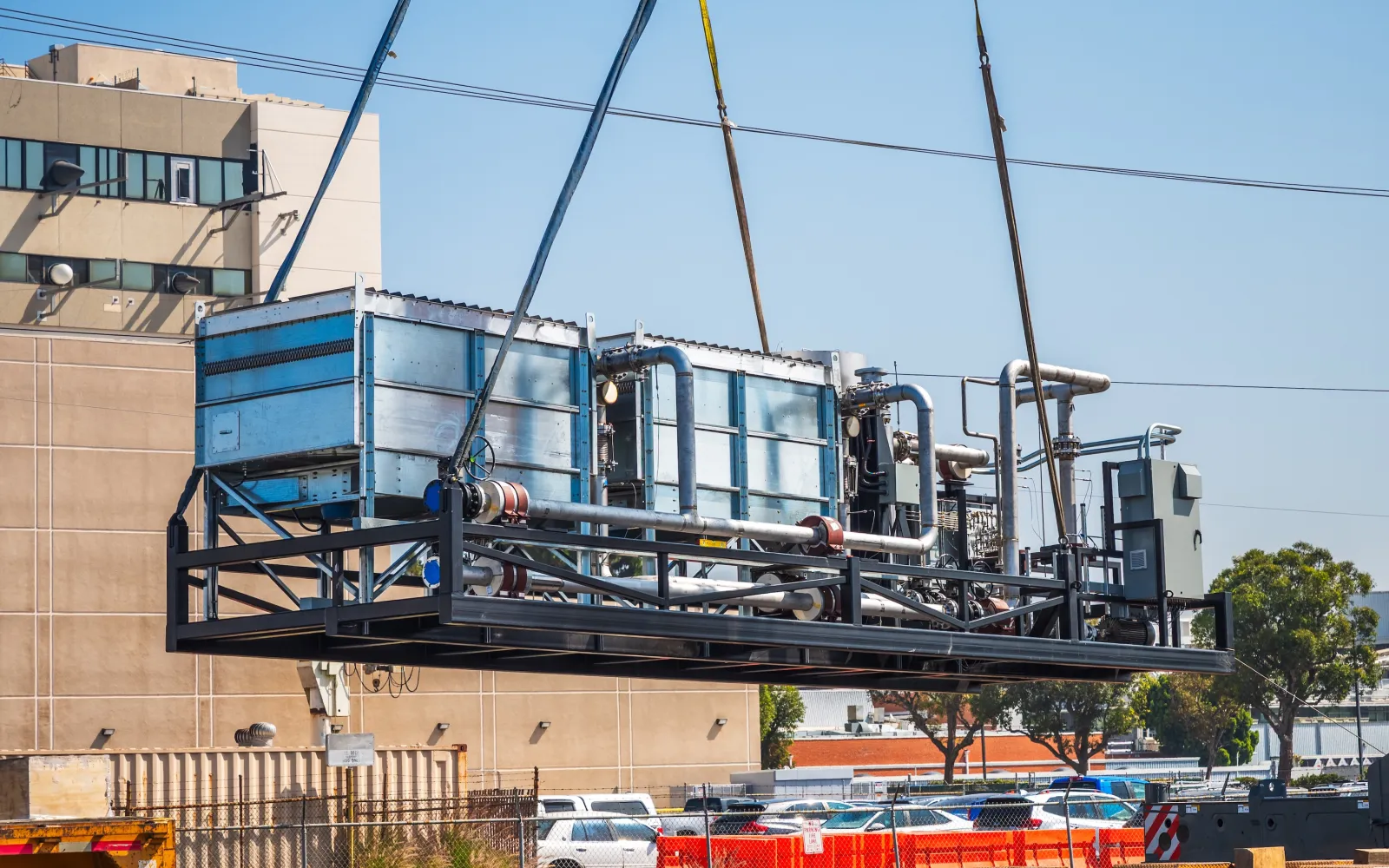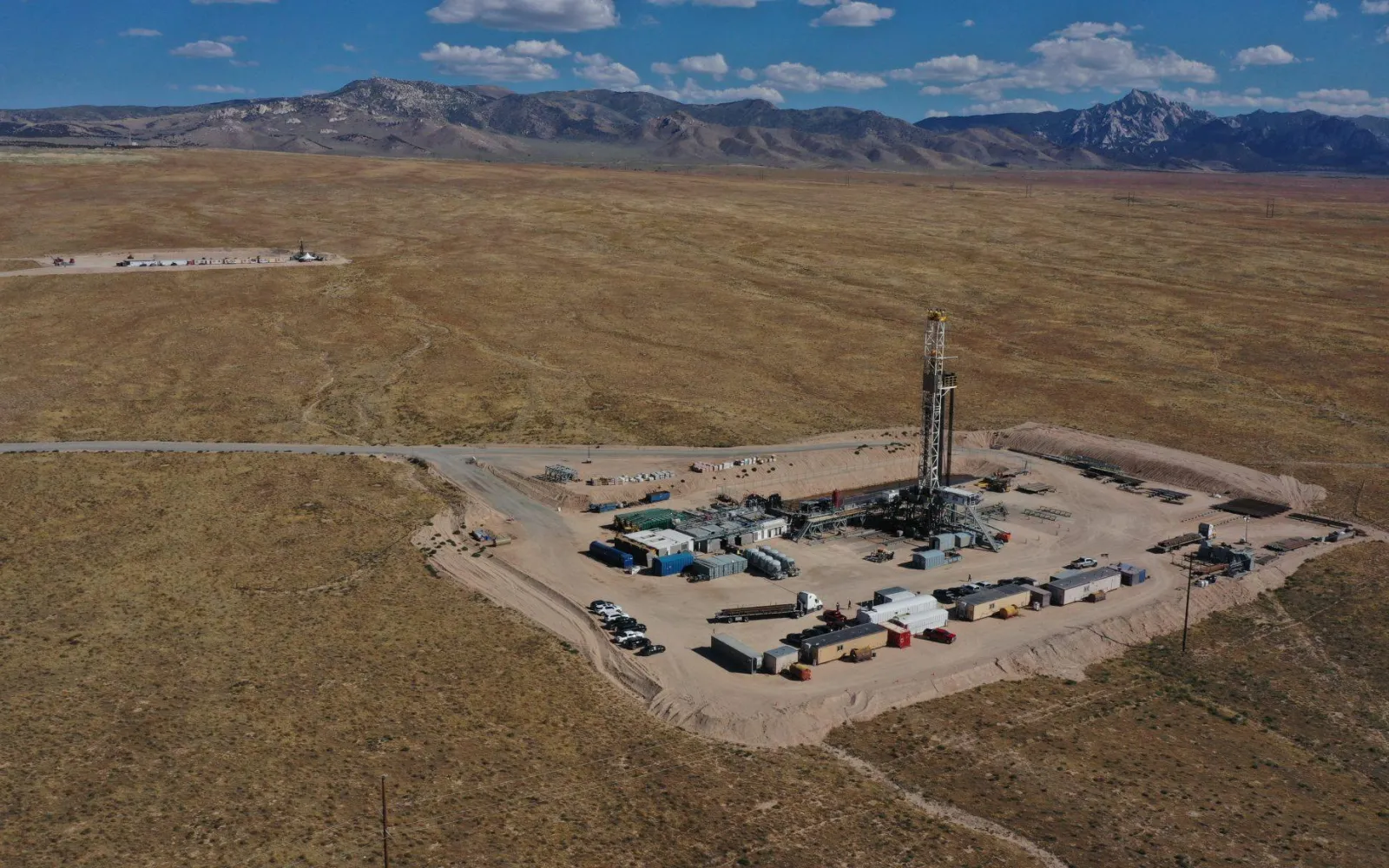

Twelve
A carbon-neutral way to produce green jet fuel and plastic
Why are we still pulling carbon out of the ground to make fuel and plastics when we could be tapping industrial sources or pulling it out of the air instead — making useful materials and reducing greenhouse emissions simultaneously?
That’s the question scientists at Twelve asked when they founded the company in 2015. And now they’re answering it by building electrolyzer modules that convert captured CO2 into raw materials for industry and transportation. This summer, the company broke ground on a plant in Moses Lake, Washington, that will use renewable electricity and biogenic carbon from nearby industrial plants to produce a million gallons per year of its E‑Jet® sustainable aviation fuel.
It’s half revolution, half evolution. The high energy density of petroleum, natural gas, coal, and other fossil hydrocarbons made them the ideal fuels for multiple waves of industrialization in the nineteenth and twentieth centuries — and allowed for vast global improvements in health, prosperity, and mobility. The Faustian bargain we struck for this energy is that most of the CO2 from hydrocarbon combustion goes straight into the atmosphere, trapping more of the sun’s heat and nudging the planet’s average temperature ever upward.
The global energy and industrial infrastructure must be decarbonized, but that can’t be accomplished overnight. And some processes cannot be converted at all: hydrocarbons are the essential feedstocks for many things we can’t live without, from light and durable plastics to life-saving pharmaceuticals to, yes, jet fuel. The founders of Twelve realized that one way to confront these facts and stop adding net new carbon to the atmosphere would be to make their own hydrocarbons by transforming waste CO2.
Most large-scale carbon capture projects envision storing the captured gas in underground geological formations or locking it chemically into inert rocks. Twelve’s “carbon transformation” approach is different; it views carbon as a marketable asset, not a waste product to be locked away underground. The company’s technology, developed by co-founders Etosha Cave and Kendra Kuhl in the Stanford University lab of chemical engineer Thomas Francisco Jaramillo, piggybacks on the same advances in polymer electrolyte membrane electrolysis of water that are driving the inexpensive, industrial-scale production of hydrogen fuel.
In traditional electrolysis, a voltage is applied to electrodes on either side of a polymer membrane. The charge at the anode breaks H2O molecules into oxygen, which stays on the anode side, and hydrogen ions, which migrate across the membrane to the cathode side to form H2 gas. By experimenting with new anode catalysts and new designs for the membrane-electrode assembly, Cave and Kuhl found a low-temperature, low-pressure way to combine water and CO2 from the air or industrial waste streams and break it into CO, O2, and hydrogen ions, which again form H2.
The combination of CO and H2 is known as synthesis gas or syngas, and it’s already a common feedstock for many types of products. Early customers for Twelve’s syngas range from materials science company Pangaia, which has used it to make polycarbonate sunglasses, to Procter & Gamble, which used it to replace petroleum-derived ingredients in Tide detergent, and the U.S. Air Force, which has tested and certified E‑Jet® fuel, also derived from syngas.
Because chemicals produced through electrolysis are identical to those extracted from the earth, they are drop-in replacements for fossil hydrocarbons, “without any tradeoffs in performance,” says Twelve’s CEO, Nicholas Flanders. When the electrolysis process is powered with renewable energy, it adds zero new carbon to the atmosphere, and depending on how the end product is used, it can actively lower CO2 levels. “With fuels, we can almost get to carbon-neutral, since you’re going to combust it again as part of its use,” Flanders says. “With materials, you can potentially get to carbon-negative. It’s almost like CO2 storage for the duration of that material.”
At Moses Lake, Twelve is building an E‑Jet® fuel plant where its electrolysis cells are stacked into modules to increase throughput. The company expects to begin production next year at a pace of 40,000 gallons per year, scaling up quickly to 1 million gallons per year. Microsoft and Alaska Airlines already plan to buy E‑Jet® fuel for their operations. And the larger potential market is vast: global demand for jet fuel exceeds 100 billion gallons per year, and all the major airlines have set aggressive sustainability goals.
Today, making and refining jet fuel and all the other chemicals derivable from CO and H2 puts about four gigatons of carbon into the atmosphere every year, or about 10 percent of global emissions. Twelve’s technology can not only reduce that percentage, but capture the carbon itself as raw material, in effect creating a closed loop. With the company’s 2022 Series B funding, Flanders says, Twelve will be able to “start deploying carbon transformation at scale and building something that has never been built before.”




